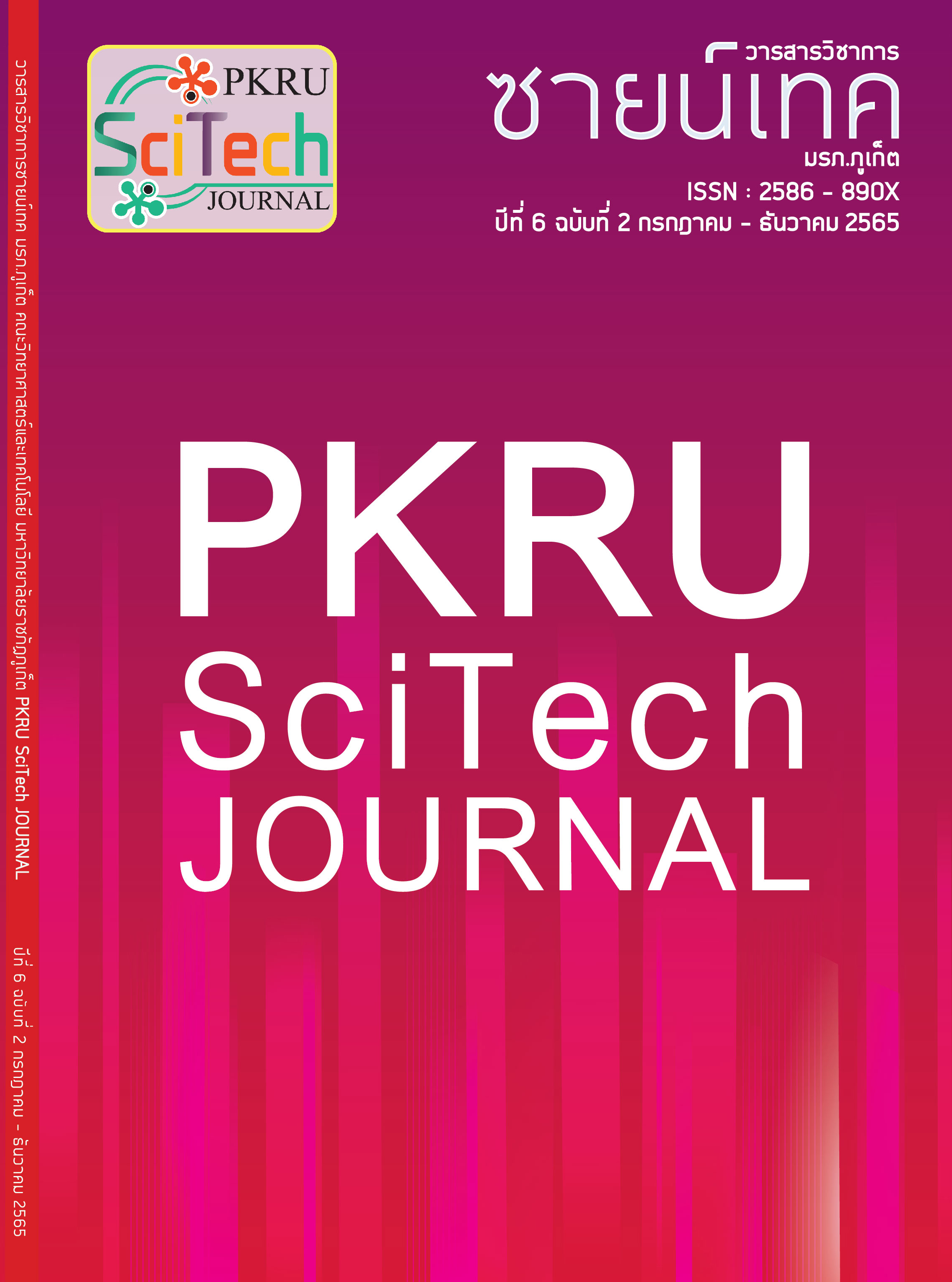Training Deep Neural Networks for Facial Landmarks Detection by Predicting Principal Component Analysis’s Coefficients
Main Article Content
Abstract
Facial landmarks detection is an important pre-processing step for facial analysis because it can reduce the diversity and complexity of images. The objective of this research aimed to improve the efficiency of training deep neural networks for facial landmarks detection by predicting Principal Component Analysis’s coefficients instead of predicting facial landmarks directly. The predicted coefficients can then be converted back to facial landmarks using the Principal Component Analysis’s templates. The experiments on the benchmark 300W dataset indicated that predicting coefficients of the Principal Component Analysis was more effective than predicting facial landmarks directly. We found that the optimal size of the coefficients was 15 and the minimum normalized mean error was 5.723 compared to 6.542 for direct facial landmarks prediction.
Article Details

This work is licensed under a Creative Commons Attribution-NonCommercial-NoDerivatives 4.0 International License.
- The original content that appears in this journal is the responsibility of the author excluding any typographical errors.
- The copyright of manuscripts that published in PKRU SciTech Journal is owned by PKRU SciTech Journal.
References
Jacquet, M., & Champod, C. (2020). Automated face recognition in forensic science: Review and perspectives. Forensic science international, 307, 110124.
Wu, X., He, R., Sun, Z., & Tan, T. (2018). A Light CNN for Deep Face Representation with Noisy Labels. IEEE Transactions on Information Forensics and Security, 13, 2884- 2896.
Ko, B. (2018). A brief review of facial emotion recognition based on visual information. Sensors, 18(2), 401.
Richardson, E., Alaluf, Y., Patashnik, O., Nitzan, Y., Azar, Y., Shapiro, S., & Cohen-Or, D. (2021). Encoding in style: a stylegan encoder for image-to-image translation (pp. 2287-2296). In Conference on Computer Vision and Pattern Recognition (CVPR). USA.
Choi, Y., Choi, M., Kim, M., Ha, J., Kim, S., & Choo, J. (2018). Stargan: Unified generative adversarial networks for multi-domain image-to-image translation (pp 8789-8797). In Conference on Computer Vision and Pattern Recognition (CVPR). USA.
Li, C., Wang, R., Li, J., & Fei, L. (2020). Face detection based on YOLOv3 (pp 277-284). In International Conference on Intelligent Computing, Communication and Devices (ICCD). CHINA.
เพชระ อินทานนท์, และ สุรศักดิ์ มังสิงห์. (2563). การทดสอบสมรรถนะการตรวจจับของโมเดลการตรวจจับจุดสังเกตบนใบหน้า. วารสารวิชาการซายน์เทค มหาวิทยาลัยราชภัฏภูเก็ต, 4(2), 13-22.
Li, X., Lai, S., & Qian, X. (2021). DBCFace: Towards PURE convolutional neural network face detection. IEEE Transactions on Circuits and Systems for Video Technology, 32(4), 1792-1804.
Karras, T., Laine, S., & Aila, T. (2019). A Style-Based Generator Architecture for Generative Adversarial Networks (pp 4396-4405). In Conference on Computer Vision and Pattern Recognition (CVPR). USA.
Cootes, T. F., Edwards, G. J., & Taylor, C. J. (2001). Active appearance models. IEEE Transactions on Pattern Analysis and Machine Intelligence, 23(6), 681–685.
Cristinacce, D. & Cootes, T. F. (2006). Feature detection and tracking with constrained local models (pp 95.1-95.10). In the British Machine Vision Conference (BMVC). UK.
Lowe, D. G. (2004). Distinctive image features from scale-invariant keypoints. International Journal of Computer Vision, 60(2), 91–110.
Dalal, N., & Triggs, B. (2005). Histograms of oriented gradients for human detection (pp 886-893). In Conference on Computer Vision and Pattern Recognition (CVPR). USA.
Jolliffe, I. T. (2002). Principal Component Analysis (2nd edition). New York: Springer Science & Business Media.
Sagonas, C., Tzimiropoulos, G., Zafeiriou, S., & Pantic, M. (2013). 300 faces in-the-wild challenge: The first facial landmark localization challenge (pp 397-403). In International Conference on Computer Vision Workshop (ICCV-W). Australia.
Sagonas, C., Antonakos, E., Tzimiropoulos, G., Zafeiriou, S., & Pantic, M. (2016). 300 faces in-the-wild challenge: database and results. Image and Vision Computing, 47, 3-18.
Feng, Z., Kittler, J., Awais, M., Huber, P., & Wu, X. (2018). Wing Loss for Robust Facial Landmark Localisation with Convolutional Neural Networks (pp 2235-2245). In Conference on Computer Vision and Pattern Recognition (CVPR). USA.
Feng, Z. H., Kittler, J., Awais, M., & Wu, X. J. (2020). Rectified wing loss for efficient and robust facial landmark localisation with convolutional neural networks. International Journal of Computer Vision, 128(8), 2126-2145.
Wang, X., Bo, L., & Fuxin, L. (2019). Adaptive Wing Loss for Robust Face Alignment via Heatmap Regression. (pp 6971-6981). In International Conference on Computer Vision (ICCV). Korea.
Liu, Y., Cao, Y., Li, Y., Liu, M., Song, R., Wang, Y., Zhigang X., & Ma, X. (2016). Facial expression recognition with PCA and LBP features extracting from active facial patches. (pp. 368-373). In IEEE International Conference on Real-time Computing and Robotics (RCAR). Cambodia.
Goulart, C., Valadão, C., Delisle-Rodriguez, D., Funayama, D., Favarato, A., Baldo, G., Vinícius, B., Eliete, C., & Bastos-Filho, T. (2019). Visual and thermal image processing for facial specific landmark detection to infer emotions in a child-robot interaction. Sensors, 19(13), 2844-2868.


